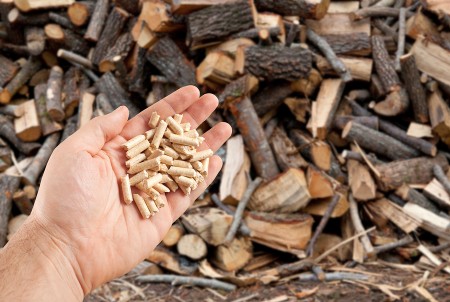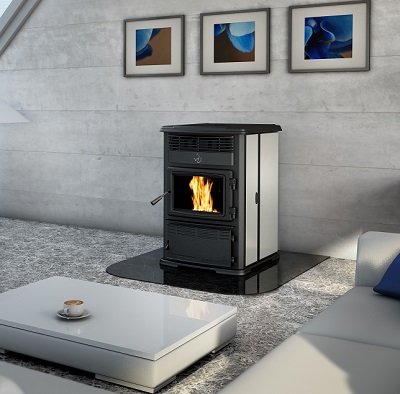Pellet Stoves: The Rundown Pt1
 If you want to burn wood for fuel, firewood isn’t your only option. Pellets are a type of biomass fuel in which wood waste, such as sawdust, that would otherwise end up in the garbage dump is diverted into an efficient energy source. Pellets are used in pellet stoves and fireplace inserts designed for pellets. The appliances that use pellets are not designed to burn any other type of fuel. When you burn pellets, you are using the type of fuel that powers the most efficient type of wood-burning appliance available today. Because of their efficiency, there are pellet stoves that have been EPA-certified as smokeless appliances.
If you want to burn wood for fuel, firewood isn’t your only option. Pellets are a type of biomass fuel in which wood waste, such as sawdust, that would otherwise end up in the garbage dump is diverted into an efficient energy source. Pellets are used in pellet stoves and fireplace inserts designed for pellets. The appliances that use pellets are not designed to burn any other type of fuel. When you burn pellets, you are using the type of fuel that powers the most efficient type of wood-burning appliance available today. Because of their efficiency, there are pellet stoves that have been EPA-certified as smokeless appliances.
Pellets produce a fraction of the amount of particulate emissions of firewood because of their remarkable uniformity and burn efficiency.
What Exactly are Pellets?
Pellets are highly compressed wood by-products refined into uniform shapes with consistent density, moisture, and energy content. Wood pellets are about the size of rabbit food pellets – 1 to 1 ½” in size. They contain only 4% to 8% moisture as compared to firewood or raw biomass material, which has a moisture content of 20% to 60%. Because pellets have less moisture, they have a higher BTU value, which means they produce more heat.
Just as hardwood has greater density than softwood and therefore burns longer and hotter, pellets have greater density than raw biomass materials. The density of pellets is approximately 40 pounds per cubic foot, whereas firewood is 10 to 25 pounds per cubic foot.
Pellets are stored in 40-pound bags that stack easily, taking up a minimal amount of space. More energy can be transported and stored at a lower cost, when pellets are your fuel source. It’s important to keep pellets dry because if they become moist, they swell and won’t operate properly in the pellet stove. Actually, the smaller the pellets, the more efficiently they feed into the hopper that feeds them into the pellet stove or fireplace. Pellets don’t attract insects or rodents, unlike traditional firewood.
 Pellets come in a variety of grades. In order to help consumers know what type of fuel they are purchasing, The Pellet Fuel Institute sets grades and standards of pellets. If you buy the premium grade variety, which is usually made with hardwoods and softwoods, your pellets will contain less than 1% ash when burned. Excess tree bark is usually what causes pellets to have high ash content.
Pellets come in a variety of grades. In order to help consumers know what type of fuel they are purchasing, The Pellet Fuel Institute sets grades and standards of pellets. If you buy the premium grade variety, which is usually made with hardwoods and softwoods, your pellets will contain less than 1% ash when burned. Excess tree bark is usually what causes pellets to have high ash content.
The type of pellets available in your area, if they are available, is typically determined by the types of local trees that are used in the lumber mills. When possible, it’s a good idea to compare the different pellet brands before buying large amounts because inexpensive pellets sometimes burn as efficiently as the more expensive grades.
To keep a home warm throughout a frigid winter usually requires about 3 tons of pellets. When it’s cold outside, one bag of pellets is usually needed every day or two.
In a recent comparison of fuel costs per 1 million BTU, wood pellets cost $19.15, electricity costs $35.17, and hardwood costs $15.87. Wood pellets are the most eco-friendly choice of fuel available.
Want to know more? Stop back to check out Pt 2 and Pt 3 of this 3 part series on Pellet Stoves.
For more information about pellets and pellet-burning appliances, contact us today.








